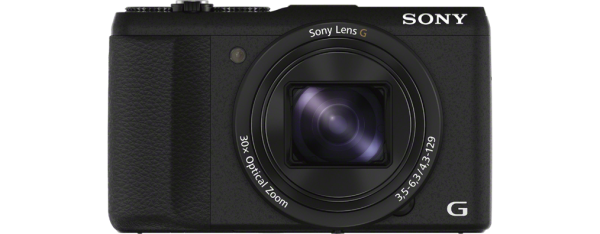Canon’s 250 megapixel sensor – the reality
Here’s this morning’s news:
United Kingdom, Republic of Ireland, 7 September 2015 – Canon Europe, a leader in imaging solutions, today announces that its parent company, Canon Inc., is developing an APS-H-size (approx. 29.2 x 20.2 mm) CMOS sensor incorporating approximately 250 million pixels (19,580 x 12,600 pixels), the world’s highest number of pixels for a CMOS sensor smaller than the size of a 35 mm full-frame sensor.
When installed in a camera, the newly developed sensor was able to capture images enabling the distinguishing of lettering on the side of an airplane flying at a distance of approximately 18 km from the shooting location
Well, this is great for the Guinness Book of Records, but you need to put it in context. Sony’s little HX60 – like many other 1/2.3 inch sensor compacts offering 20 megapixel resolution – records 705,000 pixels per square millimetre, 840 pixels per linear millimetre. And where Canon shows a 35mm f/1.4 lens on their prototype camera, the wee Sony goes to 129mm…
The new Canon sensor records about 450,000 pixels per square millimetre, or 670 pixels per linear millimetre. It’s actually just a little bit higher in resolution than the Sony one-inch sensor used in the Cyber-Shot DSC RX10 and RX100 series (414,000 pixels per square millimetre).
In theory, given the same lens and the ability to aim the camera, a pocket Sony Cyber-shot with backside illuminated CMOS 20.2 megapixel 1/2.3″ sensor can distinguish the lettering on that airplane (or if you’re in Britain, aircraft or aeroplane…) from 22.5 kilometres – and if the Sony G zoom on that HX60 is sharp enough, make that 82km. Unless of course Canon was actually testing with a 600mm f/4 attached. Saying what focal length of lens is used gets rather important when chucking around statistic-examples like this.
It is very easy to use facts and figures without reference or benchmarks for comparison.
This is no reason to rain on Canon’s parade, as the video achievement is a major one. Here’s the rest of their tech info, and the important bit is in the last paragraph – Big Brother is droning you… and across that city square, he’ll be able to recognise your eyes and put a bullet in your head with surgical precision.
With CMOS sensors, increases in pixel counts result in increased signal volume, which can cause such problems as signal delays and slight discrepancies in timing. The new Canon-developed CMOS sensor, however, despite its exceptionally high pixel count, achieves an ultra-high signal readout speed of 1.25 billion pixels per second, made possible through such advancements as circuit miniaturisation and enhanced signal-processing technology. Accordingly, the sensor enables the capture of ultra-high-pixel-count video at a speed of five frames per second. Additionally, despite the exceptionally high pixel count, Canon applied its sensor technologies cultivated over many years to realise an architecture adapted for miniaturised pixels that delivers high-sensitivity, low-noise imaging performance.
Video footage captured by the camera outfitted with the approximately 250-megapixel CMOS sensor achieved a level of resolution that was approximately 125 times that of Full HD (1,920 x 1,080 pixels) video and approximately 30 times that of 4K (3,840 x 2,160 pixels) video. The exceptionally high definition made possible by the sensor lets users crop and magnify video images without sacrificing image resolution and clarity.
Canon is considering the application of this technology in specialised surveillance and crime prevention tools, ultra-high-resolution measuring instruments and other industrial equipment, and the field of visual expression.
Actually, I see a better use. With the camera set up to cover an entire playing field, licenced from Sony the latest ‘Ball-AF’ ball recognition technology will keep focus on the ball and Minolta’s auto zoom framing patent will compose the crop. TV crews will no longer be needed and Rupert Murdoch will be able to install a full system in every stadium!
– David Kilpatrick








